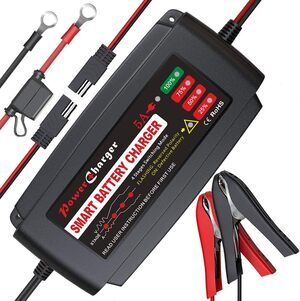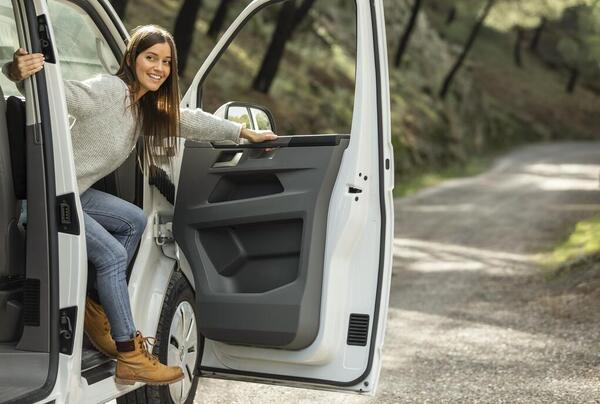Nothing dulls the excitement of taking a cross-country RV road trip – or extended stay at a local campground—faster than running out of power. It sucks. Big time. You don’t have a cooler because you thought your fridge was going to work perfectly non-stop. You didn’t bring a headlamp because you have lights in your rig, so why bother?
Then your little battery-powered alarm clock starts beeping (at least that works) and you wake up in pitch black darkness. No glow from the fridge or any other thingy that normally gives off a little light. You stand up, click on a light switch and nothing. Then, since your day is starting off fabulously you trip over the dog on the way to the loo. F! Ya with me? Plus… is the dog ok? 🙂
Related post: How Do RV Solar Systems Work?
Why not just charge RV batteries while driving?
I got so excited when I first went off-grid for a few days with my old Camplite travel trailer. I was parked in a beautiful location, not too remote to feel unsafe but enough to feel like I was a bit of a rebel. Plus, it was free. Free is super cool when on a budget and full-time RVing.

And shit worked! All I was using was a cheap, lead acid, marine deep cycle RV battery from Walmart, that’s it. No solar suitcase, solar panel… nadda. My RV battery charged when driving—trickle charge that is next to nothing power wise—and when plugged in to shore power when I stayed at a campground or RV park.
That is what really charged up my battery i.e. not when driving, but when I was plugged in to shore power for a day or so. Then I could go boondock for a solid two days. By the third day in the afternoon I’d usually hear a ‘click click’ when my fridge lost power because the battery was drained.
I learned quickly that even if I had a nice, long drive ahead of me it was not going to power back up my battery. One source I found online says it takes 10 to 40 hours to charge an RV battery while driving. Some may have a better car/RV setup, but for most non-electrical types like me with regular towing connections you will need to plug in to get your battery powered back up.
There are multiple ways to charge an RV battery
An RV battery bank can be charged in many ways, with of course solar panels installed on the roof or a portable solar suitcase plugged in to the solar outlet on the side most popular. RV batteries can also be charged by:
- A portable battery charger — this is an inexpensive device that you attach directly to your battery (negative and positive charges), plug in to a 120 volt outlet and it charges up. They are also handy to have if you need to test how much juice your RV battery has directly from the battery, or if it’s dead and won’t accept a charge.
- Plugging in to shore power — small trailers normally have 30 amp plugs (three-pronged) while fancy rigs use more powerful 50 amp (four-pronged) connections. A campground or RV park with ‘hookups’ will most often have both options at a site, but some older parks or small campgrounds only have 30 amp connections available. Connect to the AC power and your battery will charge as power is supplied to your rig. One night plugged in and you should be in pretty good shape to head out boondocking!
- Gas or propane generator — power up a generator with gas or propane, plug in your RV plug to the generator and it will power up the battery while providing power to your RV same as when on shore power.
There are other less common ways to get an RV battery charged, like directly from your car alternator, but the majority of folks will not need to hassle with that.

